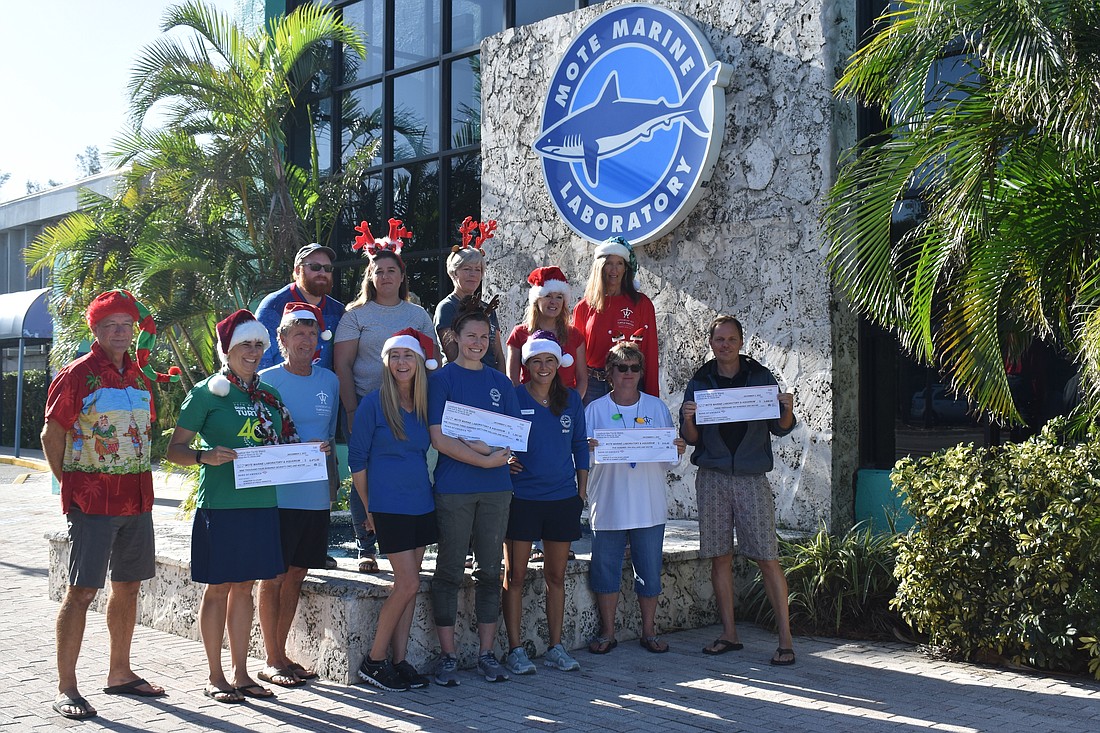- December 26, 2024
-
-
Loading

Loading

It’s a good thing turtle nesting season doesn’t coincide with the holidays. As the island lights up brighter each night closer to Christmas, let’s look back on Longboat Key’s other favorite time of the year, albeit darker.
2022 was a good year for the sea turtles, but it still wasn’t dark enough, experts said.
Nesting numbers were the fourth highest Mote’s Sea Turtle Conservation & Research Program has seen in over 40 years of tracking the hatchlings.
But there were also more light-induced disorientations than in prior years. Longboat Key Turtle Watch will continue educating the public and working with code enforcement to ensure light ordinances are understood and enforced.
Each year, from May through October, Mote and its volunteers monitor 35 miles of beaches between Longboat Key and Venice.
A total of 4,538 nests were logged, and loggerheads accounted for most of them with 4,373 nests.
1,300 of those nests were found on Longboat Key beaches, 648 by Turtle Watch volunteers on the Manatee County side.
Green sea turtle numbers are on the rise, but they still only dug 163 nests. One leatherback nest and one Kemp’s Ridley nest were also documented, both on Longboat. The latter is the smallest and most endangered species of sea turtles.
Wild Kingdom host Peter Gros was both optimistic and impressed when told a Kemp’s Ridley nest was found on the island.
“The fact that you’re starting to see a nest and they’re returning is such a good indicator that they may start returning more and more,” the wildlife expert said. “The people of Longboat Key seem to be so personally involved with protecting that species, I think they have a really good chance.”
Many of those personally involved are members of the Longboat Key Turtle Watch. While founded in 1969, the group has been operating under Mote’s marine turtle permit from the Fish and Wildlife Conservation Commission since 2005. To further their joint mission, LBKTW makes an annual donation to Mote.
“It’s our 14th year providing donations to Mote, and our total donated exceeds $110,000.” President Tim Thurman said. “That always includes the Orville Clayton, who was one of the founders of the LBKTW, scholarships for youth to go to the summer camp. Orville was a big proponent of education and getting people out on the beach, so we donate in his honor.”
This year’s donation of $14,499 will be divided up between education and supplies. Supply costs range from $64 for a pair of specialty tagging pliers to $5,000 for a satellite tag.
Kristen Mazzarella is the Mote senior biologist. She accepted the largest check on behalf of Mote, made out for $9,472.
“Kristen used to be our permit holder on Longboat Key, so many of us have known Kristen for a while,” turtle patroller Cyndi Seamon said. “Kristen’s the one in charge of our satellite tags.”
Since 2005, Mote has used 205 tags on 177 turtles, including 23 green sea turtles and 22 Kemp’s ridleys.
“Understanding the movement patterns of sea turtles can help us learn more about their abundance and population size, the areas that they frequent and congregate, and therefore, that need to be conserved.” spokesperson Stephannie Kettle said, “What’s also great about satellite tracking is that it allows the public to engage as well.”
To track Mote’s sea turtles, visit Mote.org/seaturtletracking.